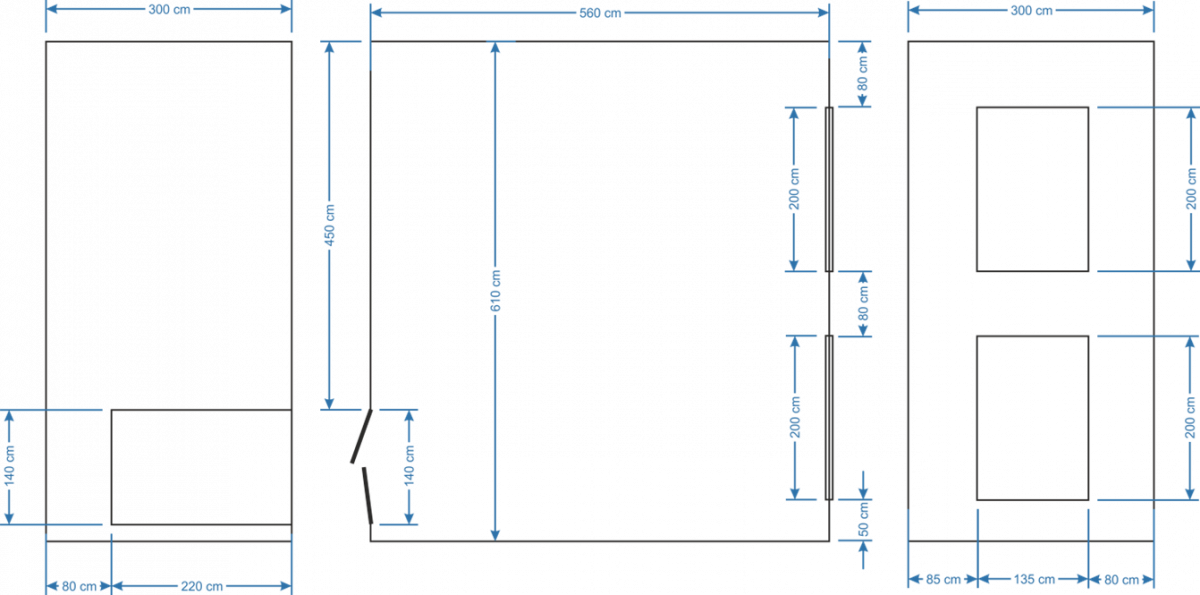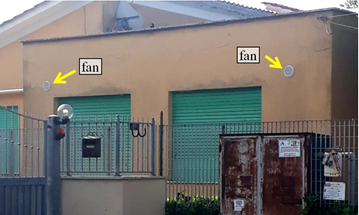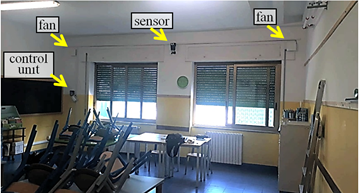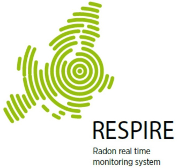R3S test at Pomezia School (sperimentation during COVID pandemy) (Action B2)
The Pomezia classroom studied within the LIFE-Respire project is approximately 6 x 5 x 3 m in size, with two large windows on one wall and the door on the opposite wall. The volume is simple and orthogonal, with structurally open and simple desks that have little impact on air mixing. Due to the elevated radon values in this school, believed to come from the walls, the windows are always left open when students are present, which creates the need to increase heating (and thus increase environmental impact and costs). Considering the high radon values (up to 2000 Bq m-3), large total volume (90 m3) and the previous experimental results, it was recognised that a single heat recovery unit would be insufficient to have any impact on indoor air quality at this site. For this reason it was decided to install two such units in this room and synchronise their motion so that one unit is always drawing fresh air while the other is expelling indoor air (and vice versa during the alternating cycle). Whereas radon monitoring was begun in early February, 2021, it was only possible to install the fans in early June due to logistical and administrative issues. After fan installation the school was closed for the summer holidays, allowing us to conduct various tests with the help of local staff.

It should be pointed out here that the installation of a second fan does not double the air flow rate obtained with a single fan, as may be intuitively thought, but rather increases it only slightly. This can be illustrated by describing the cycling of the two scenarios. For the single fan, the air intake half-cycle introduces fresh air, a slight over-pressurisation, and the escape of a portion of indoor air via leakage points (e.g., under the door), whereas the air exhaust half-cycle creates a slight depressurisation and draws air from the corridor or other points to compensate. If the leakage points are sufficiently large the fan encounters less resistance and the actual air flow rate approaches the certified value, whereas the better the room is sealed, the poorer this exchange and the greater the air-flow reduction. For two synchronized fans, instead, the air intake half-cycle of one fan is the air exhaust half cycle of the other, meaning that the second fan is essentially playing the role of the leakage points. In this case, however, the exchanged air volume is perfectly balanced, there is no resistance to air flow, and thus the air flow rate will equal the fan’s certified value. Rather than moving a significantly greater amount of air, the advantage of two synchronised heat recover units lies in the fact that air entering the room is always radon-free outdoor air (compared to corridor air that could have equally high radon levels) and depressurisation does not occur (which could draw radon from the walls or floor).








